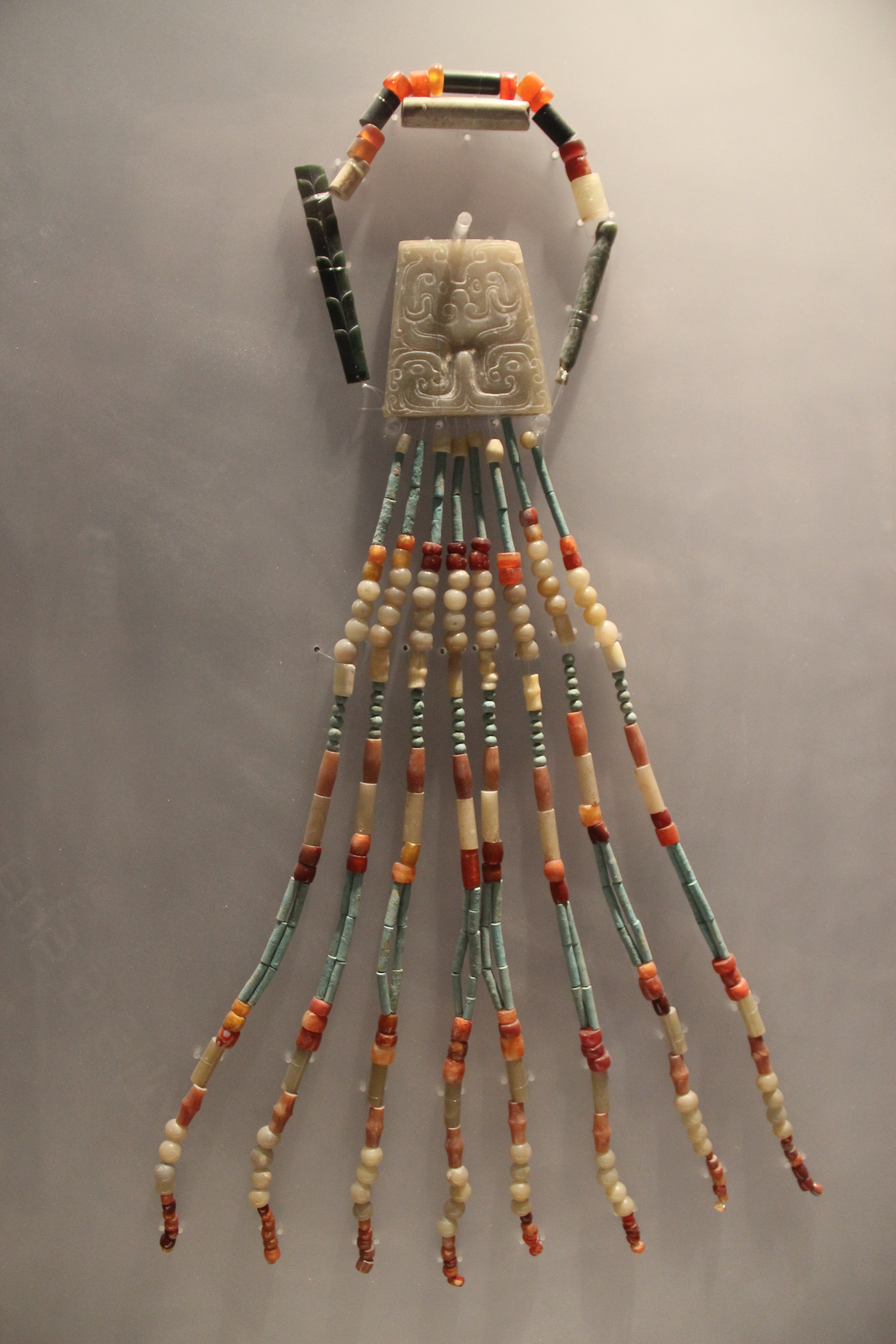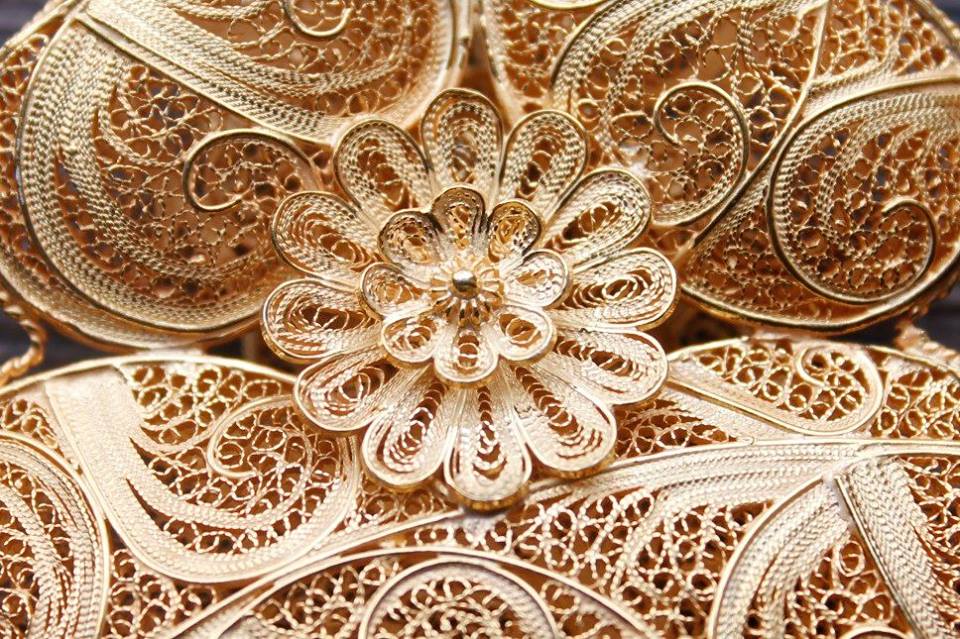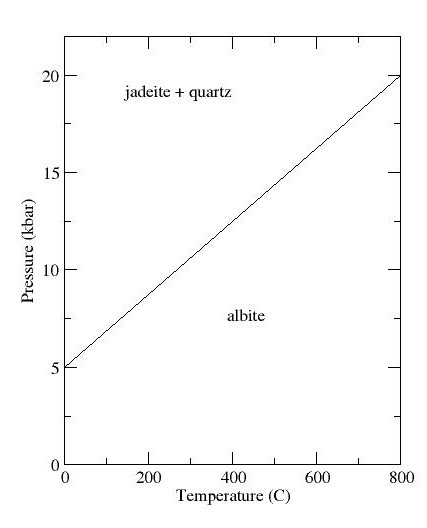|
Chaozhu
Chaozhu (), also known as Court necklace and Mandarin necklaces in English, is a type of necklace worn as an essential element of the Qing dynasty Court clothing uniform (mostly worn in the formal and semi-formal court attire). Chaozhu were worn by the Qing dynasty Emperors and members of the Imperial family, by imperial civil officials from the 1st to the 5th rank and the military official above the 4th rank. They were worn by men and women; men wore one chaozhu and only women of high-ranking status were allowed to wear triple chaozhu (one at the neck and two diagonally over each shoulder and underarms). The ''chaozhu'' was used an indicator of social ranking and seasons; they were also practical as it could be used for mathematical calculations in the absence of an abacus. Chaozu originated from a Buddhist rosary sent in 1643 by the Dalai Lama to Emperor Shunzhi; it was then redesigned by the Manchu to include new elements. The chaozu is based on the 108-beaded Buddhist rosa ... [...More Info...] [...Related Items...] OR: [Wikipedia] [Google] [Baidu] |
Necklace
A necklace is an article of jewellery that is worn around the neck. Necklaces may have been one of the earliest types of adornment worn by humans. They often serve ceremonial, religious, magical, or funerary purposes and are also used as symbols of wealth and status, given that they are commonly made of precious metals and stones. The main component of a necklace is the band, chain, or cord that wraps around the neck. These are most often rendered in precious metals such as gold, silver, and platinum. Necklaces often have additional attachments suspended or inset into the necklace itself. These attachments typically include pendants, lockets, amulets, crosses, and precious and semiprecious materials such as diamond, pearls, rubies, emeralds, garnets, and sapphires. They are made with many different type of materials and are used for many things and sometimes classified as clothing. Historical necklaces Prehistoric neckware Prehistoric peoples often used natural ma ... [...More Info...] [...Related Items...] OR: [Wikipedia] [Google] [Baidu] |
Yajin
Yajin (), also known as shijian er (), is a type of Chinese accessory which is placed at the lapels of Chinese clothing (robes and jackets); they would typically hanged down on the right side (sometimes at the front depending on the clothing closure) of the chest area in order to press on the clothing. The yajin appeared as early as the Tang dynasty and became popular in the Ming and Qing dynasties. There are various styles of yajin, including a dangling pendant-style (which is similar to jinbu or tassels in style) and a bracelet-style, known as (). Yajin can also be used as accessories on the cheongsam, where it is tied on the pankou knots. Construction and design Pendant-style yajin The pendant-style yajin may consist of string of beads, metal chains, and pendants (including precious stones, yupei-like materials, or metal filigree) which comes in various shapes such as flowers, animals, and auspicious motifs/ themes/ Chinese characters. It may also include tassels. In th ... [...More Info...] [...Related Items...] OR: [Wikipedia] [Google] [Baidu] |
Yupei
Yupei () is a generic term for jade pendants. Yupei were popular even before Confucius was born. Jade culture is an important component of Chinese culture, reflecting both the material and spiritual culture. Jade is deeply ingrained in Chinese culture and played a role in every aspect of social life; it is also associated with positive qualities and aspects such as purity, excellence, and harmony.Jade is even more valued than gold in Chinese culture. The history of the art of jade carving in China to make ornaments, including dress ornaments, extends back to before 5000 BC. Ancient Chinese held even greater importance to ''yupei'' after it was regarded as a moral integrity by Confucius. Yupei could be used as belt or waist ornaments (such as ''jinbu'' 禁步) and as necklaces which appeared as early as the Liangzhu culture. Strings of jade pendant are also used to decorate headwear, such as the Benkan, mianguan. Terminology Yupei () is composed of the Chinese character ''yu'' () ... [...More Info...] [...Related Items...] OR: [Wikipedia] [Google] [Baidu] |
Beile
The Qing dynasty (1644–1912) of China developed a complicated peerage system for royal and noble ranks. Rule of inheritance In principle, titles were downgraded one grade for each generation of inheritance. * Direct imperial princes with the ''Eight Privileges'' were downgraded for four generations, after which the title can be inherited without further downgrades. * Direct imperial princes without the ''Eight Privileges'' were downgraded until the rank of ''feng'en jiangjun'', which then became perpetual. * Cadet line imperial princes and lords were downgraded until they reached ''feng'en jiangjun'', which could be further inherited three times before the title expired completely. * For non-imperial peers, the title could be downgraded to ''en jiwei'' before becoming perpetually heritable. Occasionally, a peer could be granted the privilege of ''shixi wangti'' ( zh, t=世襲罔替, p=shìxí wǎngtì, labels=no; "perpetual heritability"), which allowed the title to be pa ... [...More Info...] [...Related Items...] OR: [Wikipedia] [Google] [Baidu] |
Yupei
Yupei () is a generic term for jade pendants. Yupei were popular even before Confucius was born. Jade culture is an important component of Chinese culture, reflecting both the material and spiritual culture. Jade is deeply ingrained in Chinese culture and played a role in every aspect of social life; it is also associated with positive qualities and aspects such as purity, excellence, and harmony.Jade is even more valued than gold in Chinese culture. The history of the art of jade carving in China to make ornaments, including dress ornaments, extends back to before 5000 BC. Ancient Chinese held even greater importance to ''yupei'' after it was regarded as a moral integrity by Confucius. Yupei could be used as belt or waist ornaments (such as ''jinbu'' 禁步) and as necklaces which appeared as early as the Liangzhu culture. Strings of jade pendant are also used to decorate headwear, such as the Benkan, mianguan. Terminology Yupei () is composed of the Chinese character ''yu'' () ... [...More Info...] [...Related Items...] OR: [Wikipedia] [Google] [Baidu] |
Qing Clothing
The Qing dynasty ( ), officially the Great Qing, was a Manchu-led imperial dynasty of China and an early modern empire in East Asia. The last imperial dynasty in Chinese history, the Qing dynasty was preceded by the Ming dynasty and succeeded by the Republic of China. At its height of power, the empire stretched from the Sea of Japan in the east to the Pamir Mountains in the west, and from the Mongolian Plateau in the north to the South China Sea in the south. Originally emerging from the Later Jin dynasty founded in 1616 and proclaimed in Shenyang in 1636, the dynasty seized control of the Ming capital Beijing and North China in 1644, traditionally considered the start of the dynasty's rule. The dynasty lasted until the Xinhai Revolution of October 1911 led to the abdication of the last emperor in February 1912. The multi-ethnic Qing dynasty assembled the territorial base for modern China. The Qing controlled the most territory of any dynasty in Chinese history, and ... [...More Info...] [...Related Items...] OR: [Wikipedia] [Google] [Baidu] |
Glass Bead Making
Glass bead making has long traditions, with the oldest known beads dating over 3,000 years. People have been making beads out of glass since at least Ancient Roman times. Perhaps the earliest glass-like beads were Egyptian faience beads, a form of clay bead with a self-forming vitreous coating. Glass beads are significant in archaeology because the presence of glass beads often indicates that there was trade and that the bead making technology was being spread. In addition, the composition of the glass beads could be analyzed and help archaeologists understand the sources of the beads. Common types of glass bead manufacture Glass beads are usually categorized by the method used to manipulate the glass: wound beads, drawn beads, and molded beads. There are composites, such as millefiori beads, where cross-sections of a drawn glass cane are applied to a wound glass core. A very minor industry in blown glass beads also existed in 19th-century Venice and France. Wound glass be ... [...More Info...] [...Related Items...] OR: [Wikipedia] [Google] [Baidu] |
Filigree
Filigree (also less commonly spelled ''filagree'', and formerly written ''filigrann'' or ''filigrene'') is a form of intricate metalwork used in jewellery and other small forms of metalwork. In jewellery, it is usually of gold and silver, made with tiny beads or twisted threads, or both in combination, soldered together or to the surface of an object of the same metal and arranged in artistic motifs. It often suggests lace and remains popular in Indian and other Asian metalwork. It was popular as well in Italian, French and Portuguese metalwork from 1660 to the late 19th century. It should not be confused with ajoure jewellery work, the ajoure technique consisting of drilling holes in objects made of sheet metal. The English word filigree is shortened from the earlier use of ''filigreen'' which derives from Latin meaning thread and grain, in the sense of small bead. The Latin words gave ''filigrana'' in Italian which itself became ''filigrane'' in 17th-century Frenc ... [...More Info...] [...Related Items...] OR: [Wikipedia] [Google] [Baidu] |
Gold
Gold is a chemical element; it has chemical symbol Au (from Latin ) and atomic number 79. In its pure form, it is a brightness, bright, slightly orange-yellow, dense, soft, malleable, and ductile metal. Chemically, gold is a transition metal, a group 11 element, and one of the noble metals. It is one of the least reactivity (chemistry), reactive chemical elements, being the second-lowest in the reactivity series. It is solid under standard temperature and pressure, standard conditions. Gold often occurs in free elemental (native state (metallurgy), native state), as gold nugget, nuggets or grains, in rock (geology), rocks, vein (geology), veins, and alluvial deposits. It occurs in a solid solution series with the native element silver (as in electrum), naturally alloyed with other metals like copper and palladium, and mineral inclusions such as within pyrite. Less commonly, it occurs in minerals as gold compounds, often with tellurium (gold tellurides). Gold is resistant to ... [...More Info...] [...Related Items...] OR: [Wikipedia] [Google] [Baidu] |
Jadeite
Jadeite is a pyroxene mineral with composition Na Al Si2 O6. It is hard (Mohs hardness of about 6.5 to 7.0), very tough, and dense, with a specific gravity of about 3.4. It is found in a wide range of colors, but is most often found in shades of green or white. Jadeite is formed only in the subduction zones of continental margins, where rock undergoes metamorphism at high pressure but relatively low temperature. Jadeite is the principal mineral making up the most valuable form of jade, a precious stone particularly prized in China. Most gem-quality jadeite jade comes from northern Myanmar. Jade tools and implements have been found at Stone Age sites, showing that the mineral has been prized by humans since before the beginning of recorded history, written history. Name The name ''jadeite'' is derived (via and ) from the Spanish language, Spanish phrase "piedra de ijada" which means "stone of the side". The Latin version of the name, ''lapis nephriticus'', is the origin of the ... [...More Info...] [...Related Items...] OR: [Wikipedia] [Google] [Baidu] |





